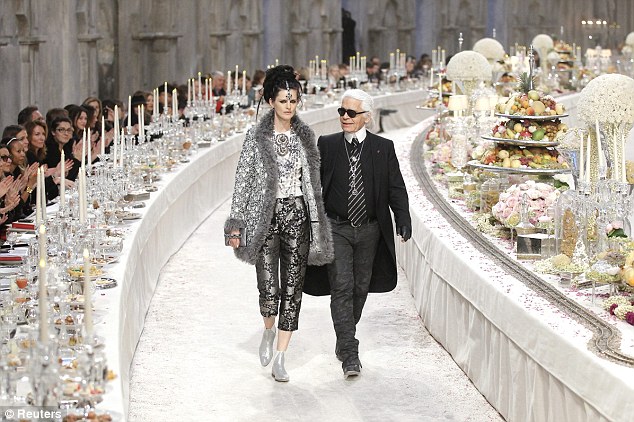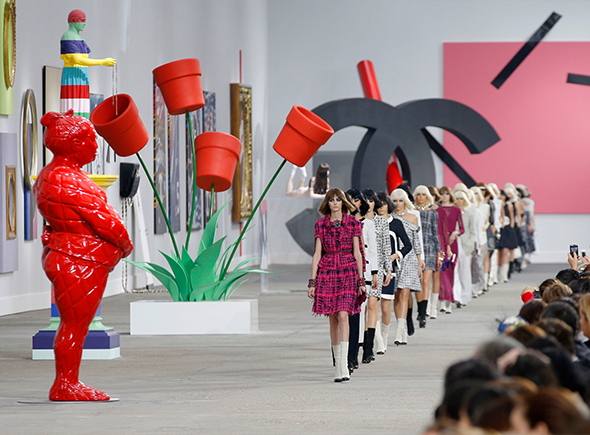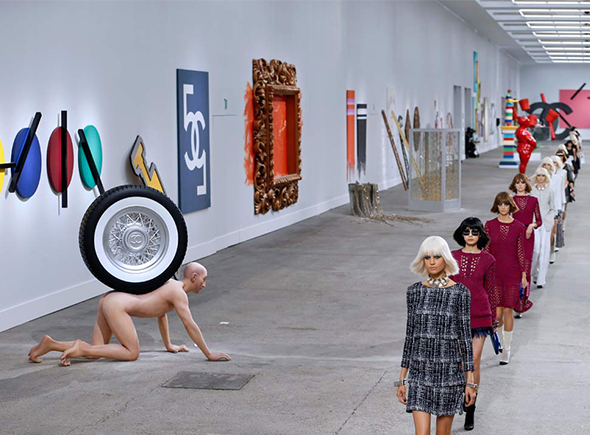Karl Lagerfeld Sold Art Collection
- William Kioko
- Feb 21, 2019
- 3 min read
Karl Otto Lagerfeld was a German creative director, fashion designer, artist, photographer, and caricaturist who lived in Paris. He was known as the creative director of the French fashion house Chanel, a position he held from 1983 until his death, and was also creative director of the Italian fur and leather goods fashion house Fendi, and of his own eponymous fashion label. He collaborated on a variety of fashion and art-related projects.
He was a very creative director designer and artist behind numerous fashion brands, including Chanel and the Karl Lagerfeld Collection. Karl Lagerfeld was recognized worldwide for his white hair and black sunglasses. He was known as the creative director of the French fashion house Chanel a position he held from 1983 and was also creative director of the Italian fur and leather goods fashion house Fendi and of his own eponymous fashion label. Karl Lagerfeld collaborated on a variety of fashion and art-related.
Lagerfeld photographed Mariah Carey for her 2005 V Magazine cover, and shoots for the lines under his direction: Chanel, Fendi and Karl Lagerfeld.
In addition to his work in fashion, he had created costumes for La Scala in Milan, and for films such as The Sun Also Rises, Babette’s Feast, Viva le Vie, and Le General de L’Armee Morte. He has also worked in the field of decorative art, restoring a number of old mansions, including the Chateau de Penhoët in Brittany. He was also an accomplished photographer, shooting fashion advertisements for both Chanel and for his House of Lagerfeld.
Karl Lagerfeld was a man of greatness, who spent lavishly on decorating his houses. He loved the decorative arts of the 18th century, before the rise of Neo-Classicism, with a touch of Prussian aesthetics (he was also fond of Frederic the Great’s time). At auction sales and galleries in Paris and London, the fashion designer would purchase furniture, sculptures and paintings at any price. He would sometimes pay even more in restoring and covering the pieces with silk. Everything had to be perfect. And everything had to fit into the theatricality of his home.
Some people, were given an opportunity to have a proper look at Lagerfeld’s interiors. He especially enjoyed the tempered baroque of the last kings’ reigns. Falconet’s sculptures, Oeben’s commode "à la grecque", Caffieri’s gilded bronzes, Gobelins’ tapestries, Chinese celadon vases mounted on Parisian gilded bronzes, and so on. Lagerfeld, who took great care of his evening toilette in case, he said, he would die during the night had a particular love for four-poster beds, which his main decorator and advisor, Patrick Hourcade, described as "the paramount of sculpture". He was also fond of Louis XV chairs, which he saw as true works of art. He was friends with the specialist Bill Pallot for whom he wrote a preface to his handbook on 18th century seating. "Their spirit will always stay young, like all the conversations they have heard… Nothing represents better the soul of time".
Christie’s sold 150 of Lagerfeld's paintings, Bouchet, Fragonard among others in New York and 400 pieces of furniture and art works in Monaco. The sale, which totaled 150m francs (around €30m) was a bit of a disappointment. Some top lots, like a Falconet group and three vases, which he had bought for a total of 10m francs, as well four-poster bed on which he spent a couple of million, did not sell. The tapestries, telling the story of Esther, were bought cheaply by the French state. The auction house had failed to set the scene in the same way it did for the Yves Saint Laurent or Givenchy sales. And Lagerfeld's taste was probably too singular. Like his predecessor Jacques Doucet, who in 1912 turned to Modern art, he never came back to the Ancien Régime style but it remained his only love.
Regardless of where his vast wealth ends up, we will always have the hundreds of designs he left behind, as well as the pieces his work will continue to inspire for years to come. And that's priceless.

.png)











